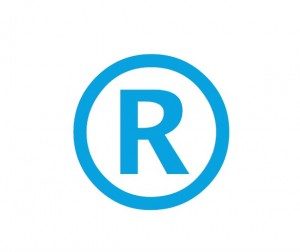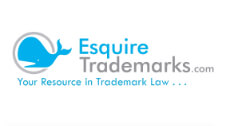Benefits of Trademark Registration – Should You Register Your Mark?
It’s a fundamental question in trademark law: What are the benefits of a registered trademark? I must discuss this at least three times week with trademark clients. In addition to providing a general sense of security, there are numerous benefits of trademark registration that will help protect your brand and business. The purpose of this page is to identify some of the main benefits of federal trademark registration.

Quick Summary – The Advantages of Trademark Registration
- A U.S. Trademark Registration Provides Nationwide Rights – All Fifty States and U.S. Territories
- Registered Trademarks Are Given a Presumption of Validity by Courts – Common Law Trademarks Are Not
- Registered Trademarks Show Up in Trademark Searches and Block Later-Filed Applications
- Registered Trademarks Grant the Right to use the ® Symbol when the Mark is Used for the Goods & Services Listed in the Registration
- Registered Trademarks Are Used to Prevent Importation of Unauthorized Goods
- Trademark Registration Qualifies Sellers to Enroll in the Amazon Brand Registry
- After Five Years of Use and Registration, the Trademark Owner can Apply to Have it’s Trademark Certified as Incontestable
- A Registered Trademark Gives Owners Credibility with Internet Service Providers (YouTube, eBay, Amazon, Facebook, Twitter, Pinterest and other social media and e-commerce websites) and Often Expedites E-Commerce and Social Media Takedowns of Imposters and Others Infringing your Trademark.
- Registered Trademarks Provide a Basis for Foreign Trademark Applications and Registrations
A U.S. Trademark Registration Provides Nationwide Rights – All Fifty States and U.S. Territories
In the United States, you are not legally required to register your mark. Unregistered trademarks receive “common law” rights. But, unregistered trademark rights only exist where the owner does business.
A registered trademark provides nationwide rights in all fifty states and U.S. Territories such as Guam, Northern Mariana Islands, Puerto Rico, and United States Virgin Islands.
Principal Register Trademarks Are Given a Presumption of Validity by Courts
In court, the Principal Register Trademark Registration entitles a plaintiff to a presumption that the trademark is valid. With an Unregistered Trademark, a plaintiff must plead and prove the underlying facts that would establish that the trademark is enforceable. That is, a Common Law trademark owner would have to show (1) that it adopted and used the mark in commerce, and (2) that the mark is recognized by the public as identifying plaintiff’s business. As such, more work is required in pleading and proving an infringement case for the Common Law Owner. That being said, most Registered trademark plaintiffs plead and establish the “underlying facts” anyway as part of a common law infringement or unfair competition claim. This is usually done as a safeguard in the instance the registration is attacked by the defendant or invalidated on other grounds.
Registered Trademarks Show Up in Trademark Searches and Block Later-Filed Applications
Registered Trademarks show up in trademark search results and block later-filed applications. Once the trademark registration is granted, it is listed on a searchable trademark register. The Trademark Electronic Search System (TESS) is searchable both by the public and by the trademark Examining Attorneys.
The public can search the TESS database to see what trademarks are registered. Being on the register acts as a deterrent to others who may want to use your trademark. The Examining Attorneys use TESS when examining new applications. They search the register for any conflicting marks that would block the new application.
ISPs (Internet Service Providers) often search registered trademark records to resolve disputes. ISPs including Amazon, eBay, Facebook, Instagram, YouTube, Google, and Twitter have dispute departments. These ISPs often remove content after verifying ownership of a registered trademark.
Registered Trademarks Grant the Right to use the ® Symbol when the Mark is used for the Goods & Services Listed in the Registration
Owners of Trademarks are granted the right to use the ® symbol when the mark is used for the goods and services listed in the registration. Use of the ® symbol increases credibility by putting on others notice that the mark is registered with the U.S. Patent and Trademark Office. Visit my article The Trademark Symbol – TM vs. ® for more information about the proper use of each symbol.
Importation Protections are Available by the U.S. Customs & Border Patrol (CBP) for Owners of Registered Trademarks
The owner of a registered trademark can file for importation protections with the U.S. Customs & Border Protection (CBP). The CBP maintains a database of registered trademarks. Using the database, the CBP inspects goods at ports of entry for infringing trademarks. If infringing goods are found, they are impounded and blocked from entering into United States commerce.
In order to get on the CBP database, the trademark owner must (a) have a registered United States Trademark, and (b) record its trademark registration with the CBP. The CBP filing is a separate filing from the Trademark Office, and the fee is about $190.
Trademark Registration Qualifies Sellers to Enroll in the Amazon Brand Registry
In order to enroll in the Amazon Brand Registry, the owner must have a registered trademark on the Principal Register – the Supplemental Trademark Register doesn’t count.. The Amazon Brand Registry offers Brand Owners powerful tools for stopping piracy and infringement. They include “proprietary text and image search, predictive automation based on your reports of suspected intellectual property rights violations, and increased authority over product listings with your brand name.” For more details on these tools, visit the Amazon Brand Registry Trademark Page.
After Five Years of Use and Registration, the Trademark Owner can Apply to have its Trademark Certified as Incontestable
With the filing of a Combined Section 8 and Section 15 Declaration, a registered trademark can qualify for and receive incontestable trademark status, which is conclusive evidence in court of the trademark registrant’s ownership and validity of the trademark.
Once certified as incontestable, the trademark registration is conclusive evidence that (a) the mark is valid, (b) the registrant is the undisputed owner of the name/logo, and (c) the registrant has the exclusive right to use the mark in the United States. In other words, a litigant is precluded from challenging or contesting your trademark in any court proceeding.
There are exceptions that allow a challenge to the incontestable trademark, but they are limited, and the burden is on the challenging party to prove the exception.
A Registered Trademark Gives Owners Credibility with Internet Service Providers
A registered trademark gives owners credibility with Internet Service Providers (YouTube, eBay, Amazon, Facebook, Twitter, Pinterest and other social media and e-commerce websites). An unregistered trademark will be challenged if it is misleading, deceptive, or likely to cause confusion as per social media sites’ terms of use. Trademark registration also expedites e-commerce and social media takedowns of imposters and others infringing your trademark.
Registered Trademarks Provide a Basis for Foreign Trademark Applications and Registrations
A U.S. Trademark Registration allows for two types of benefits when seeking foreign / international trademark protection. The first is that a U.S. application/registration provides the owner with access to the Madrid Protocol. The Madrid Protocol is an international trademark system set up by treaties with many foreign nations. The United States is a member of the Madrid Protocol. As such, U.S. trademark applicants can access the Madrid Protocol system to extend its trademark rights in over 100 jurisdictions including China, India, and the European Union. A U.S. trademark holder can use the Madrid Protocol to manage and extend trademark rights worldwide – in a single language – often without the burden of hiring trademark counsel in each foreign country.
The second benefit relates to filing date priority. Under various treaties, a U.S. trademark applicant can extend its United States filing date to other countries. Many foreign jurisdictions will treat the foreign trademark application as filed on the US filing date – so long as the foreign application is filed within a set time period from the U.S. application (Typically 6 months).
We are in a global economy, and by selling online you are extending your reach beyond traditional borders. Therefore, it is very important to extend your U.S. Trademark Registration into foreign jurisdictions.
Disclaimer: This information is for educational purposes, and is not intended to be legal advice. Each case turns on its own facts. Please consult with an experienced trademark attorney.
EsquireTrademarks.com – Online Trademark Attorneys – What We Do:
- Our trademark attorney, prepares and files trademark applications for clients throughout the United States and abroad.
- We prosecute and defend trademark infringement and unfair competition actions in the Federal Courts throughout the United States and abroad.
- We also prosecute trademark office actions and appeals before the United States Trademark Office.
- We handle internet based trademark disputes and trademark, DMCA, and copyright takedowns.
- We draw on our experience as trademark litigators to guide you through the trademark process.
- We support businesses, law firms, and individuals by providing top notch legal services in intellectual property matters.
